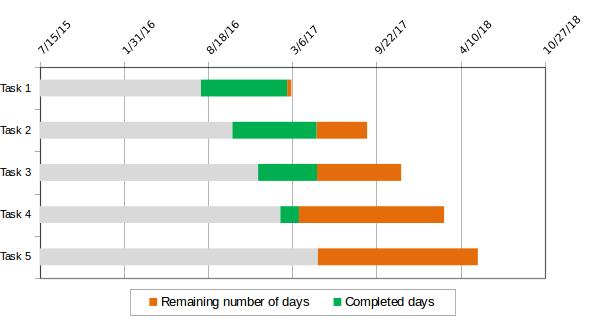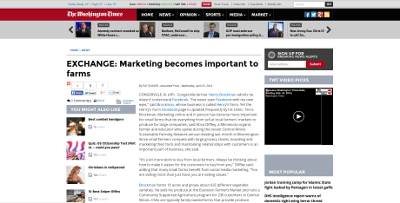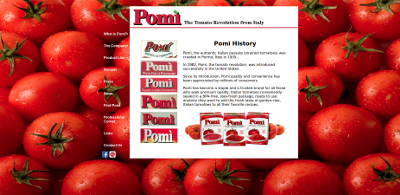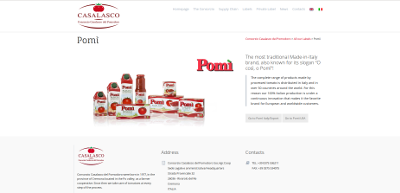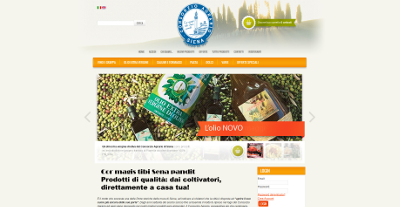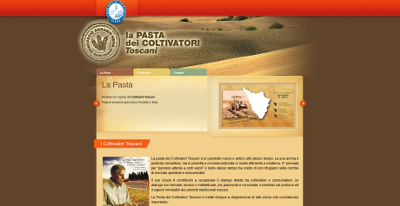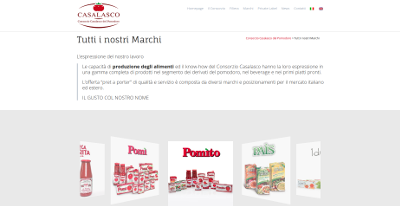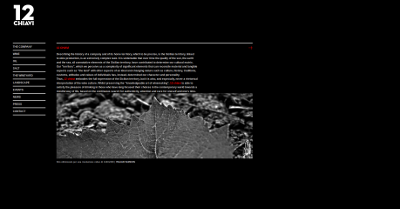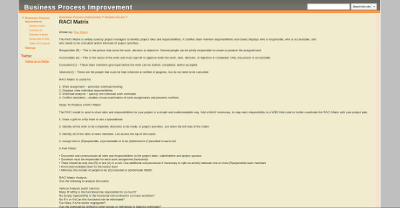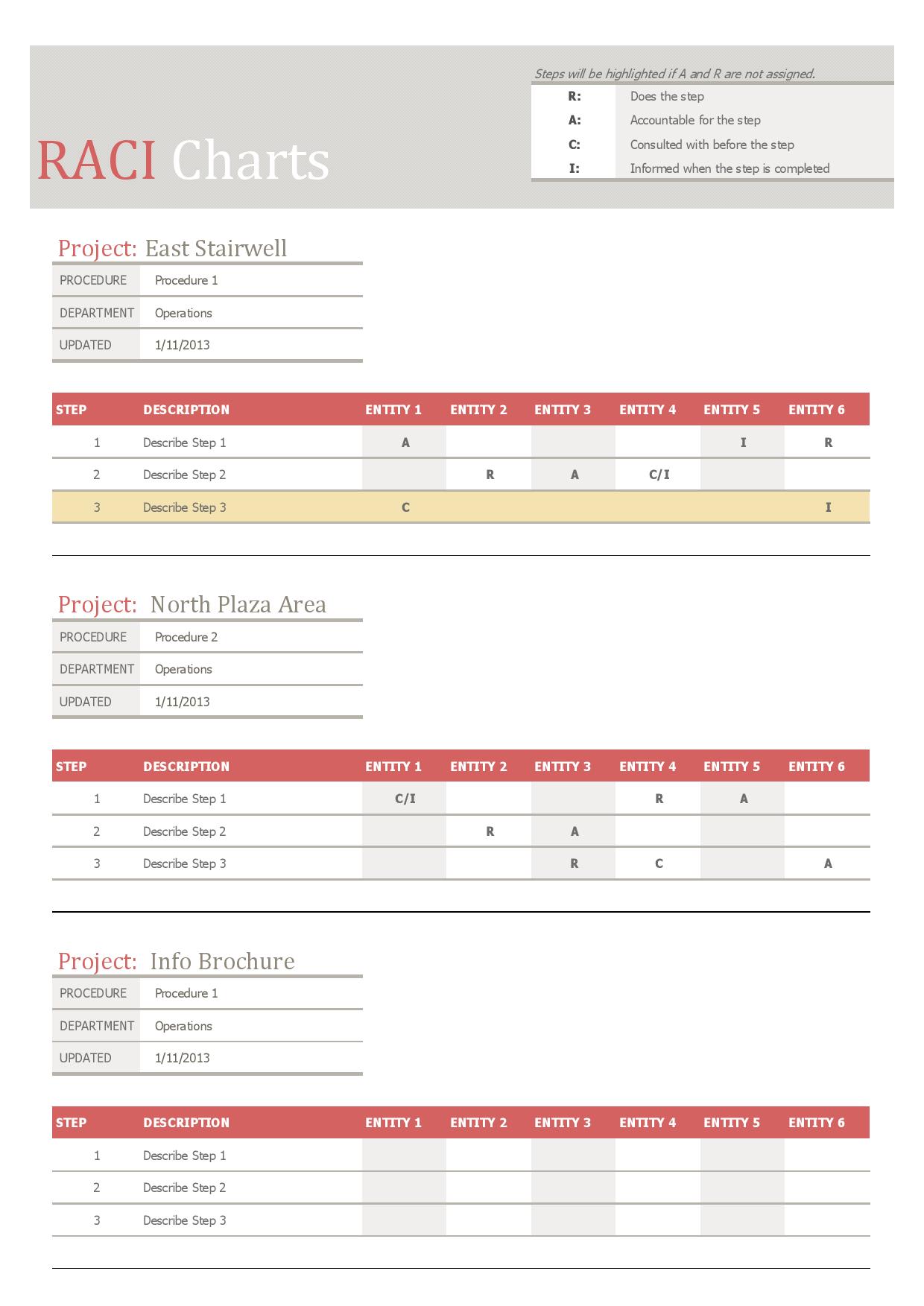Marketing is a way to get a better return for your produces
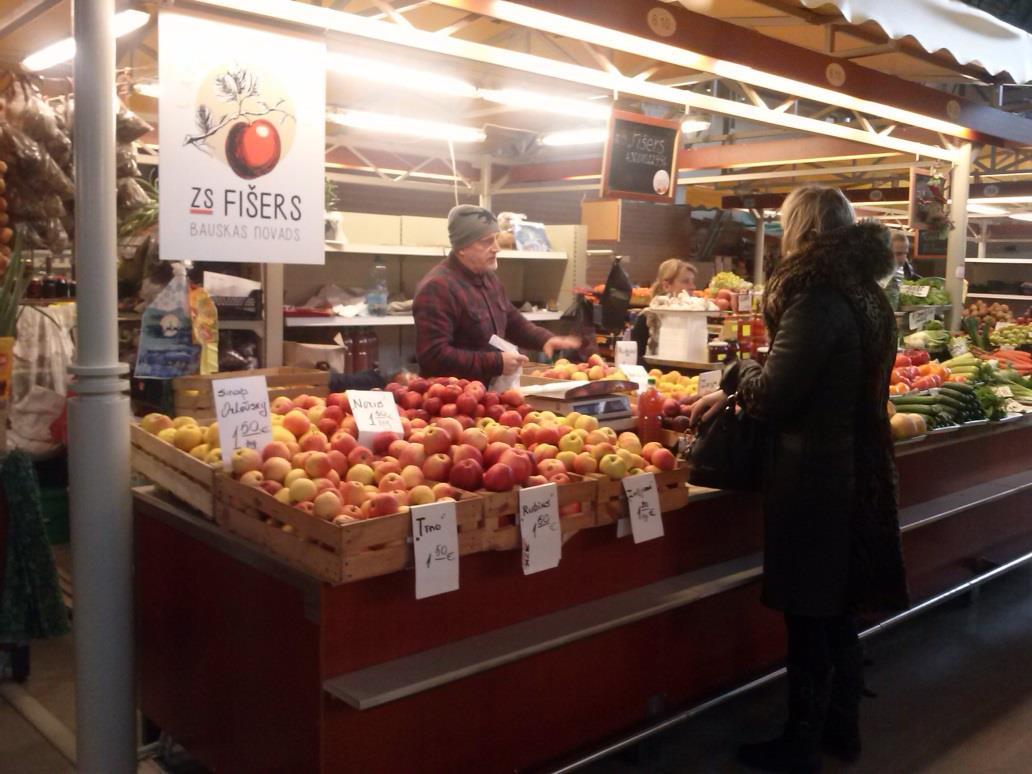
Imagine that you and your neighbouring farmers produce exactly the same kind of apples. On Saturdays, all of you have an identical stand at the local market. How would customers choose? Of course, on the basis of price. In no time, you would all find yourself cutting costs more and more, most probably at the expense of quality. You would be unhappy because of low margins and customers would be unhappy because of poor choice and poor quality. One day one of you starts talking with consumers, to understand what they would actually prefer, and decides to adapt his offer to “market needs”. He may begin to offer apple jam, dried apples, apple cakes, or even decide to plant different trees, with different varieties of apples. He might also choose to offer not only apples, but a whole variety of different fruits, partly produced and partly bought. He could even embellish his stall, and offer information and a recipe book. He could start delivering the fruits to his clients' home! Would competition still be price-based now? Or would consumers be willing to pay more to receive better products and a better service? Will that farmer get more – economical and psychological – satisfaction from his work and a better return for his produce?
Ask yourself
So, what is marketing?
Marketing can be defined as a set of tools which vary from case to case but can always be identified. They allow a firm to design its products and services in its best way according to its customer’s needs, thus increasing the probability of increasing sales and getting satisfactory margins.
Let’s analyse this definition. First of all, we speak of a “set of tools” to be combined together, which will be detailed in the "marketing mix" section. They include things like product, packaging, distribution channels, price, communication. But marketing is first of all a “mentality”, which means that we think about our clients’ needs all the time, not just in the end, when products are ready to be sold. It is very useful to plan in advance where, when, how, to whom, at what price we are going to offer our products and services. That is why the definition says that marketing helps us “design”, i.e. “plan” our production. Why is this useful? Because this way of seeing things helps us have the right ideas, and find the points that make us different, in the eyes of our clients, from our competitors. Some farmers object and believe “marketing is for food companies, not for farmers”. That is why our definition says that marketing tools may vary, but can always be identified. Even if you sell basic products, whose quotations are defined on international markets, you can always differentiate your offer, for example, by being very efficient, to your client’s advantage, from the administration and / or logistics point of view. The next element of the definition to examine is “thus increasing the probability of increasing sales and getting satisfactory margins”. Of course, marketing is not magic: its results are not certain, and / or they might take some time to manifest. What is sure is that, due to competition, and without a marketing – oriented vision, the probability of a satisfactory performance is lower.
Check:
Videos on farmers selling fresh produce. Features eight farms in four Northeast states describing a variety of retail and wholesale strategies for marketing fresh produce

Northeast Region Sustainable Agriculture Research & Education (SARE) Programme. Horticultural Marketing, Walker Farm, Dummerston, VT, USA.

Marketing your farm products, Cornell Small Farms Programme
Which actions does marketing involve, in practice?
Required actions involve a mix of common sense, creativity and planning. The whole process is both interesting and satisfactory, because what you will be actually doing is to give more (intrinsic and) perceived value to your work.
The first thing to do is to “analyse” your market. This means: to find a way to know if your present clients are fully satisfied or if there is anything else that you can do for them; to see if there are potential new clients that you could reach and how; to compare your offer to your competitors’ and think if you can do better than them and how.
Results from this analysis will be the basis for a plan, in which you state what you are going to do, why, how, at what cost and with what expected results. The plan can go in depth with activities, roles and responsibilities, quotations, etc. It is important to include the way in which you are going to measure results (e.g. by monitoring sales, prices, the number of clients, etc.).
Then the time comes to act, to put the plan into practice, for example by selling new / different products, by increasing or changing your communication, by exploring a new distribution channel.
By monitoring results, you can decide to do some fine tuning of your plan, or to change it partially: what is important is that now you have a strategy, a personality, a clear goal.
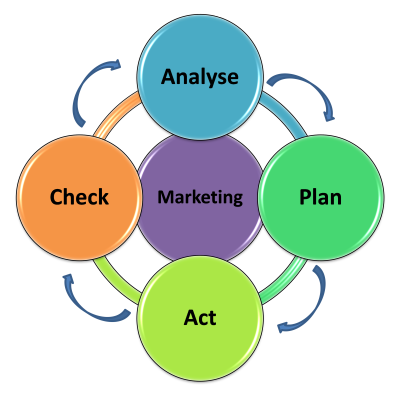
Keep in mind
"No wind is favourable for a sailor who does not know where he wants to go"Seneca, Moral Letters to Lucilius 71; 1975,
pp. 458-459
We can do marketing errors without knowing it ...
- to offer a product / packaging that we like, but most consumers don’t (it can be avoided by conducting a simple test, asking consumers to express an opinion before we start producing)
- to offer a very good product at a too low price and/or in ugly packaging (clients are induced to think that it does have a low value)
- to launch a new idea without defending it (by patents, brands, strong communication, etc.), too slowly and with little communication (so that competitors will be able to copy it, and perhaps sell it with more emphasis)
- to imagine that everybody will know that our product is good just because we know that and because we are aware of the fact that we have produced it well (it is not so: image counts at least as much as experience, and clients like to be given information: so we have to promote all the positive elements of our product)
- to ignore the existence of a new marketing channel, until most of our competitors have taken advantage of it and it gets harder for us to say that we are there, too.
Cinema reminds us in some popular movies how food and emotions are related...

A Good Year, Director Ridley Scott, 2006
A British investment broker inherits his uncle's chateau and vineyard in Provence, where he spent much of his childhood. He discovers a new laid-back lifestyle as he tries to renovate the estate to be sold.
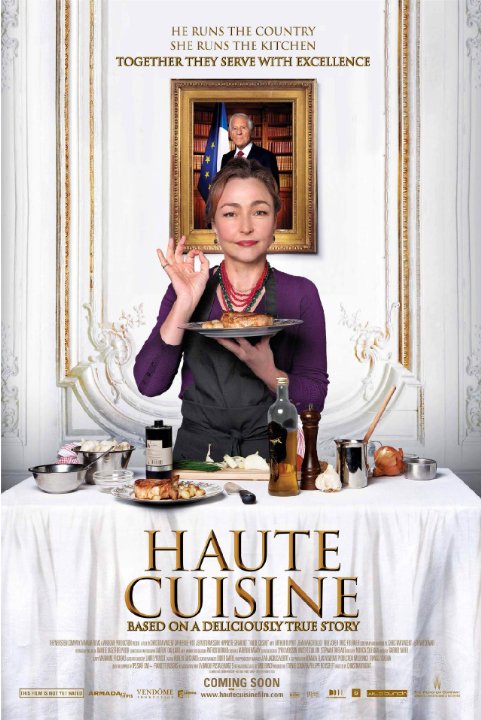
Haute cuisine, Director Christian Vincent, 2012
The story of Danièle Delpeuch and how she was appointed as the private chef for François Mitterrand.
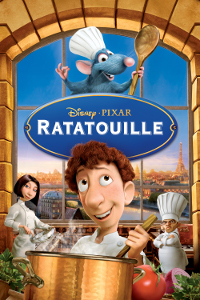
Ratatouille, Directors Brad Bird, Jan Pinkava, 2007
A rat who can cook makes an unusual alliance with a young kitchen worker at a famous restaurant.
Do you have a talent for marketing?
Results
9-10 points = no doubt: you have a talent for marketing! you just have to deepen your knowledge a bit ...
6-8 points = you can easily become a good marketing manager for your farm ...
0-5 point = you are on the right path, and this course is a perfect starting point!
Take a look at this picture ...
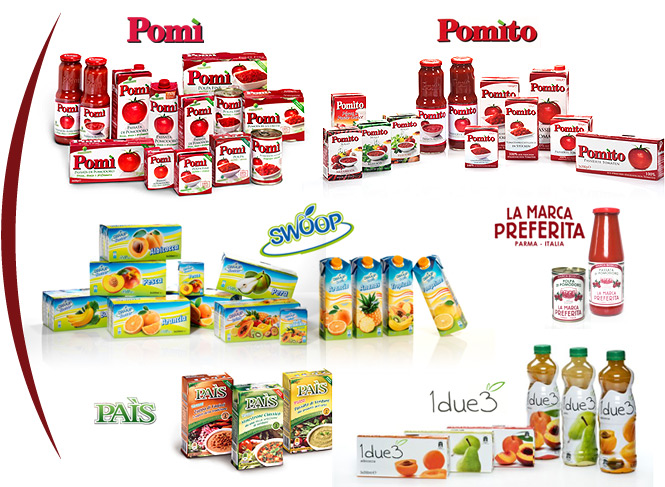
... it is an example of a firm with strong marketing techniques
This company, Pomì, is an Italian consortium, created in 1977 as a cooperative of farmers. Now it involves over 300 farms, and it is integrated in agricultural product processing. The core product is processed tomatoes, but the range of products has been extended to those that are made with a contiguous technology (e.g. fruit juices), thus achieving a wide product line, to satisfy different consumer and retailer needs. They specialised in offering a wide range of packaging, and sell both with their own label and as co-packers, in Italy and abroad. A co-packer is a company that produces products to be sold under retailers’ brands (which are called “private labels”).
As you can see, there is more in this example than simple productive ability: there is the decision to work together, there is the perception of the needs of the market (not only consumers’, but also retail buyers’, who prefer to have one supplier for a range of products, and guaranteed products for private labels), there are sound communication strategies which are seen both on the packaging and on other communication tools. The product is sold in modern distribution channels, which means that the company has met big retailers’ requirements.
It is quite different from just growing tomatoes...
Look at these links ...
Keep in mind
Product oriented and marketing oriented attitude
Once upon a time, the idea of the consumer in the way we know it today did not exist. People produced just the kind and amount of food they needed to cover their primary need of hunger. Varieties available were limited. In that time, everything that was produced had a good chance to be appreciated and chosen. This “special” moment is over, and cannot be duplicated even in developing economies, not only because of demand characteristics, but also because of the supply structure and strategies. As soon as a market, or market segment, becomes interesting, many firms are immediately elbowing their way through the crowd to be noticed, informing consumers about the existence of a wide choice, of different quality levels, and so on.
That is why now we always have to include competition in our business planning.
A farmer with a “product oriented” attitude concentrates on production techniques, which are the basis on which he builds his cost structure, his investment policy, the composition of his staff, and of course his range of products and their packaging (this latter being regarded more as a means of transportation than as a support for communication). His way of doing business tends to be rather rigid, when it comes to facing changes in his environment. A sales oriented farmer believes that if you strive enough you’ll be able to sell what you produce, it is just a matter of engaging. A marketing oriented farmer sees his activity as circular: market needs, which he examines accurately, are the starting point and the final goal. They influence his production, pricing and communication policies, his staff composition, his investments, and a flexible vision of the production process, aimed at seizing, or even anticipating, emerging opportunities.
Look at these links ...
Is product orientation wrong?
No, it is not. Instead, it is very important to preserve and pursue product quality.
Consumers are becoming more and more informed about the different aspects of product quality. Taste is very important, of course, but there are also health issues, and other aspects related to origin, to animal welfare, to ethics and sustainability. Another significant element is service: consumers appreciate everything that helps them make their lives easier (i.e. time saving solutions, easy storage, information on use ...).
What is important is that quality that results from the time and attention we took when producing it is correctly perceived and rewarded. For this to happen, specific aspects of the quality products we offer need to meet specific requirements from the target markets.
It is often said that we are transforming products into solutions.
It is, in fact, important to keep in mind that the value of a product is not confined to its practical use.
For example, an apple can be regarded as a simple fruit, but also as a source of vitamins, a way to “keep the doctor away”, as a childish memory (grandmother’s apple cake ...), as a light snack ..., and according to these different elements, we can organize our offer, our image and our communication strategy.
Another example concerns rice, which is indeed a very common cereal, it may seem to have nothing special, but recent consumption trends have given it a special value because it is ... gluten free, so it has become “a solution for a good gluten free meal”.
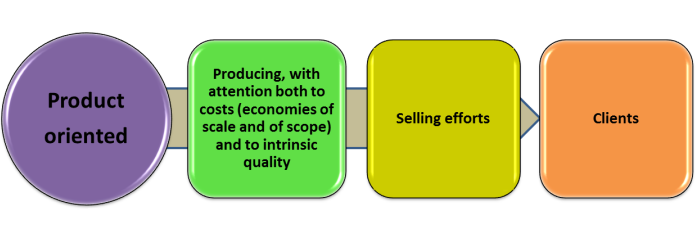
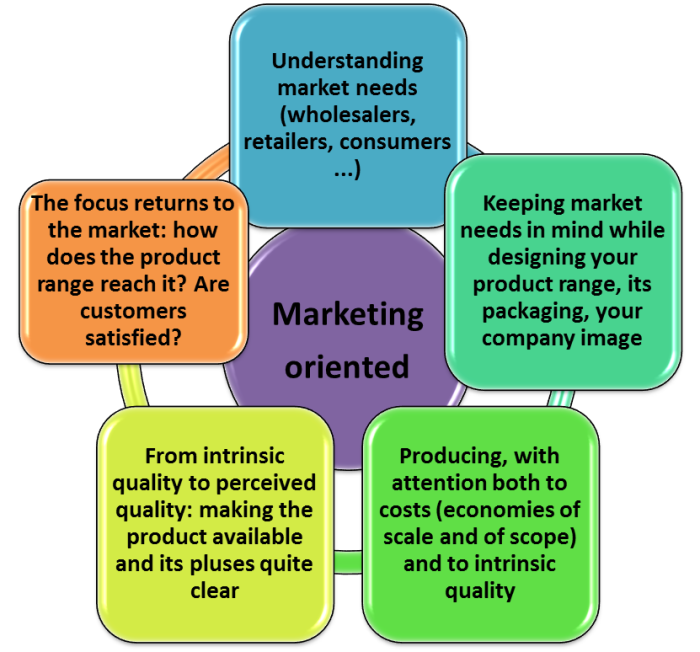
A comparison between product and marketing oriented farmers’ behaviours
| Product oriented farmer’s behaviour | Marketing oriented farmer’s behaviour |
|---|---|

Farmer Alex produces beans, choosing the best varieties available, and the latest techniques to maximise the quantity and quality of his production. His staff includes a very good agronomist. He sells his beans to several processing firms.
|
Farmer Christina produces beans, too. Her staff includes not only an agronomist, but also a marketing consultant, who tells Christina about a new trend: an increasing number of consumers are choosing to follow a vegan diet (no products of animal origin), and are always looking for the best alternative sources of proteins. Christina asks her agronomist to select bean varieties with the highest and “better” protein content, and starts raising them. In the same time, she concludes an agreement with a vegan food producer. The result of the partnership is a range of tasty vegan products with a high protein content. |

Farmer Christina is a fruit producer. She has many trees of different kinds, and sells her fruits to a wholesaler. |
Farmer Alex produces more or less the same fruit range as Christina. He always reads agricultural news and once in a while goes to a local supermarket, to see which kinds of fruits are sold there, and how. He even buys these fruits and tastes them, to check if they are better or worse than his. Reading a newsletter, he learns that a local communication campaign will be made in schools, to stimulate fruit consumption. The campaign will be about the link between the consumption of fruit and health. Alex decides to invest in his own, parallel campaign, by means of leaflets, a Facebook page, e-mail newsletters and a stall in the local market, with explicative posters. His claim is a bit funny: “When they see Alex’s fruits, doctors change their job”, and he speaks about his very accurate cultivation and storage methods. He even organises the possibility to buy online and have fruits delivered at home. |

Farmer Alex breeds pigs. He is respectful of the law, and knows everything about fodders. His pigs are sold to the local slaughterhouse.
|
Farmer Christina breeds pigs, too. She learns that consumers are increasingly interested in animal welfare: they feel guilty when they eat the meat of an animal that has suffered. Christina decides to go beyond the law. She starts breeding her pigs in larger spaces, doing everything she can to make their lives pleasant. In the meantime, she does her best to spread information about her initiative in the right places. She even reaches an agreement with a slaughterhouse to reduce the stress and the fear of the animal when transported and slaughtered. In a few months, she has many people visiting her farms to see “Christina’s happy pigs”, and asking where they can buy her meat, so that she even decides to open her own outlet. |
Think and plan: strategic marketing

Where to go, which way to follow, which single steps must be taken
When we prepare our marketing strategy, two things are important to start with: where we are now, and where we want to go. This is not as simple as it may seem, because not all firms know “where they are”. I know where I am with my business when I know things like: what I am selling, to whom (which kind of clients), why what I sell is appreciated, whether my prices are higher or lower than average, whether my prices and costs - combined together - are yielding satisfactory profits, if there are potential clients I have not yet reached and why.
Other things that are important to know:
- are market trends for the products I sell favourable, or is it better to diversify, that is to explore other segments with better trends?
- what are my competitors doing? Are there new strategies I should know about? Are new entries (new competitors) possible?
Once we know where we are, we must decide where we want to go. We do not accept to be brought about by the flow, we want to have a direction, and we want to follow a path to reach our goals. Strategic marketing has to do with identifying and planning that particular path.
Keep in mind
Albert Einstein
"An admirable exercise my friend. Continue it.”
Agatha Christie, Peril at End House
Steve Jobs
Goals and paths
Possible goals concern a better “positioning”, a higher market share, the entry in a new market segment or market channel, internalisation, profits improvement, a better company reputation, and so on. Goals are often interconnected, so we have to take all possibilities into consideration, but then try to be as simple as possible in our planning, to avoid confusion and resource dispersion.
Once one or more goals are set in front of us, how can we reach them? Which road shall we follow?
Positioning, for example, is synthesis of the value that our clients assign to our products and services:
how can we improve it? Consumers and retailers, of course, assign value to what mostly satisfies their needs. It is, therefore, impossible to improve our positioning by offering something nobody is very interested in, or which is regarded as trivial. So the first step of our path to better position our product would be to offer something which can be felt, when bought, as rewarding. Then we have to build the “personality” of our new approach, which is made up of visual, words (messages), the right selling behaviour, the right points of sale, etc.. As you can see, many things have to be decided, and a good decision technique involves trying walking in our clients’ shoes, whether they are wholesalers, retailers, or final consumers. If you were one of them, what would you appreciate most? While designing your path, there is another thing to be always kept in mind: when thinking of the characteristics of your farm, do you see a possibility to choose a “special” way, which is not immediately accessible to your competitors? For example, there is an olive producer in Sicily whose olive trees are so well positioned, between mountains and sea, that her plants are hardly ever attacked by diseases and parasites. She choose, therefore, to produce an “absolutely organic oil”, and in doing this she faces much lower costs in comparison with her competitors, because no treatments are needed in her olive grove. She is very lucky in this, but many farms may have special features (location, tradition, know-how) that can be exploited to build their strategic route.
Look at this link ...
The output of this thinking is a strategic document describing our goals for the next 2-3 years and the way we want to follow to reach them. See Module 2 for further info on this topic
Who has the responsibility of each specific decision?
For example, if I want to sell abroad, and take part in all possible fairs, I’ll end up having no budget left to set up a really fantastic booth in my main target country. Keeping a plan helps us focus resources. It is better to keep things simple, to be sure that results can be assessed.
Act: operational marketing
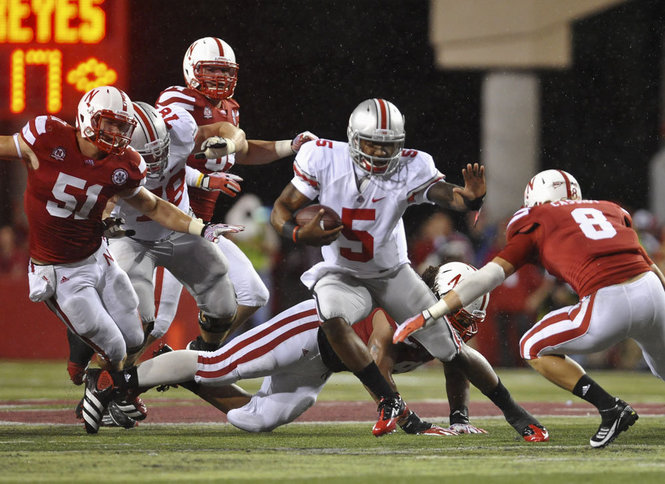
Now we have to put decision into practice, in a rational way
Operational marketing plans can accurately be defined as all actions to be taken. They can be divided into a few main steps:
- put the path recommended by the strategic phase into single actions, and describe each of them in detail
- gather information: ask for quotations (e.g. for logo and packaging design, for radio spots, for a new website, etc.); analyse your human resources and their skills etc.
- assign to each action a person in charge, a “team”, a budget, a timetable, a means of monitoring work progress, and a means of measuring results (e.g. number of contacts, number of “likes” on a social network page, number of visits to the website etc.): a comparison of the budget with results will give you a first idea of the effectiveness of the action, as a basis to decide if it is better to go on or to change
- check the consistency and economic feasibility of the whole project
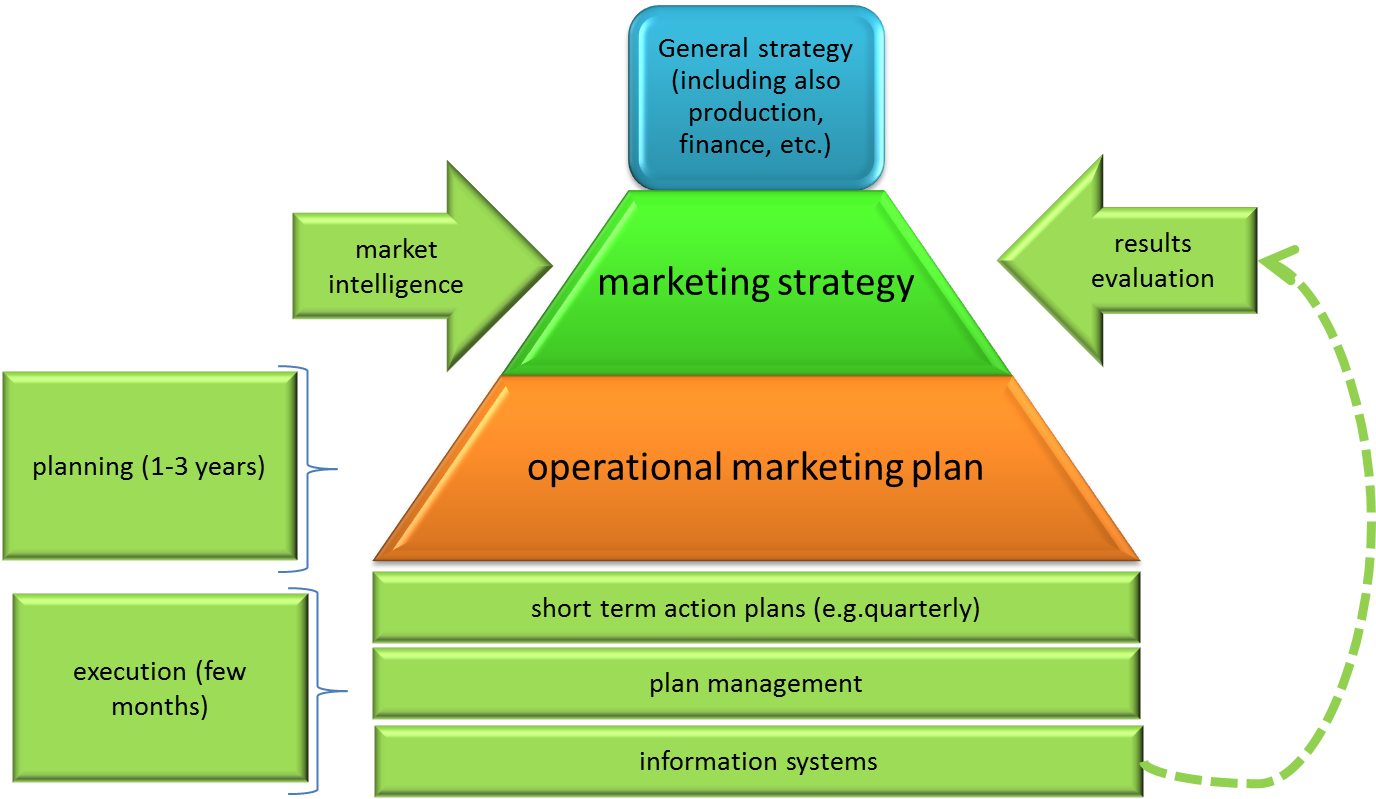
Keep in mind
Mahatma Gandhi
William James
Antoine de Saint-Exupéry
Charles Chaplin
Video on how farmers in mid Wales have diversified in order to stay in business in the wake of foot and mouth disease and BSE
Project Management methods & tools: WBS, RACI, GANTT
WBS means Work Breakdown Structure, and is an easy way to split up the work to be done into activities, to have the complete picture of what has to be done.
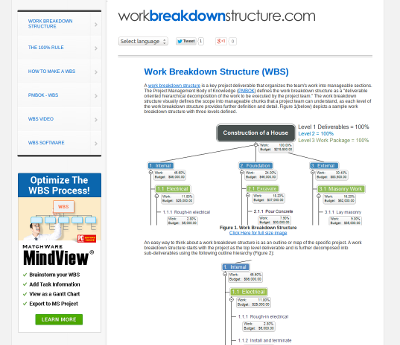
www.workbreakdownstructure.com
Now that you have defined what has to be done, you have to assign specific tasks. In this case, the RACI method can be very useful: it is an easy way to specify, for each task, who is Responsible of doing it (R), who is Accountable (A) for the final decision, who has to be Consulted (C), and who has just to be Informed (I). You can link your RACI with your WBS.
The GANTT chart is a bar chart that illustrates your project’s schedule, making it easy to check work progress and deadlines.
| Start Date | Completed Days | Remaining number of days |
|
| Task 1 | 8/1/16 | 205 | 10 |
| Task 2 | 10/15/16 | 200 | 120 |
| Task 3 | 12/15/16 | 140 | 200 |
| Task 4 | 2/6/17 | 44 | 345 |
| Task 5 | 5/6/17 | 0 | 380 |
